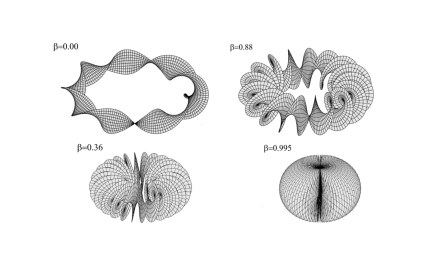Understanding and predicting bursts of high-energy particles from the Sun is essential for protecting astronauts, satellites, and technology on Earth and in space(? Do you want to focus on the earth or is saying space OK (e.g. travel to Mars)). These events, known as solar energetic particle events, are powerful bursts of high energy charged particles from the Sun that can interfere with communication systems, damage the valuable assets and pose health risks in space. A team of researchers from the University of Michigan, NASA Goddard Space Fligth Center, and NASA Space Radiationa Analysis Group has created a new computer model called SOlar-wind with FIeld-lines and Energetic-particles (SOFIE) to improve the predictions of these harmful events. Their study is published in the journal Space Weather.
The SOFIE model helps forecast these space weather events by simulating how high-energy particles are accelerated, meaning how they gain speed and energy, and how they travel through space. By combining real-time solar wind conditions, the constant flow of charged particles from the Sun, with detailed computer simulations of powerful solar eruptions called coronal mass ejections, which are huge bursts of plasma and magnetic fields from the Sun’s outer layer, the model offers a more accurate way to predict space radiation hazards. “By using fundamental physics to simulate these events, we can predict the intensity of solar energetic particles with greater accuracy,” explained Dr. Zhao.
The researchers tested SOFIE on past solar energetic particle events to see how well it could predict their behavior. The results showed that the model closely matched real observations, making it a significant improvement over previous methods. In addition, the SOFIE model is the only predictive model that fully integrates all critical components of the solar energetic particles dynamics, including acceleration and transport from the low solar corona to the interplanetary space, while maintatining the capability of deliver forecsts faster than real time.
One of SOFIE’s key strengths is its ability to track how coronal mass ejections interact with the solar wind and speed up energetic particles. The model follows a step-by-step process, first simulating background solar wind conditions, then adding a magnetic fluxrope, a twisted structure of magnetic fields, to initialize a coronal mass ejection, and finally predicting how high-energy particles move through space. This approach gives scientists a clearer picture of how solar eruptions unfold and how they might affect Earth. “We have shown that our model can accurately capture the key processes behind solar energetic particle events,” said Dr. Zhao.
The study suggests that SOFIE could be a valuable tool for space weather forecasting, giving astronauts, satellite operators, and space agencies earlier warnings of potential hazards. By improving predictions, the model helps protect the health of astronauts from radiation, the communication networks and navigation systems from disruptions caused by solar storms. The research team plans to improve SOFIE further by adding more real-time data and increase its prediction time window to better support the future space missions.
Journal Reference
Zhao, L., Sokolov, I., Gombosi, T., Lario, D., Whitman, K., Huang, Z., et al. “Solar wind with field lines and energetic particles (SOFIE) model: Application to historical solar energetic particle events.” Space Weather, 2024. DOI: https://doi.org/10.1029/2023SW003729















































